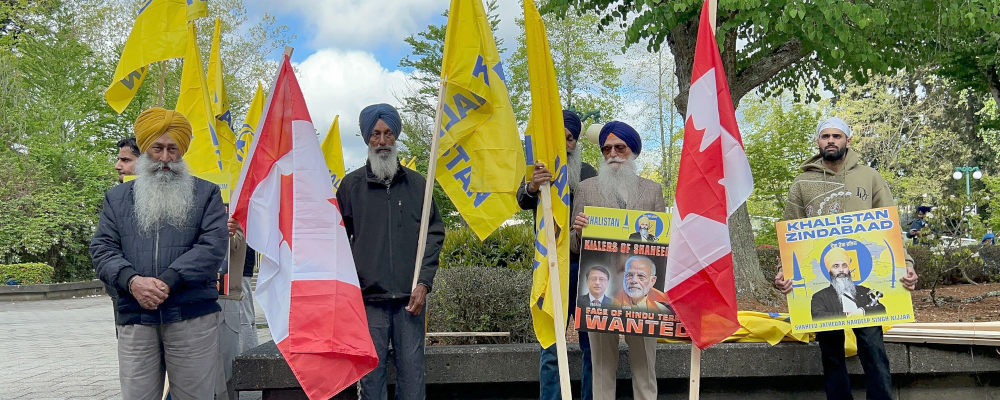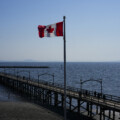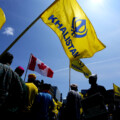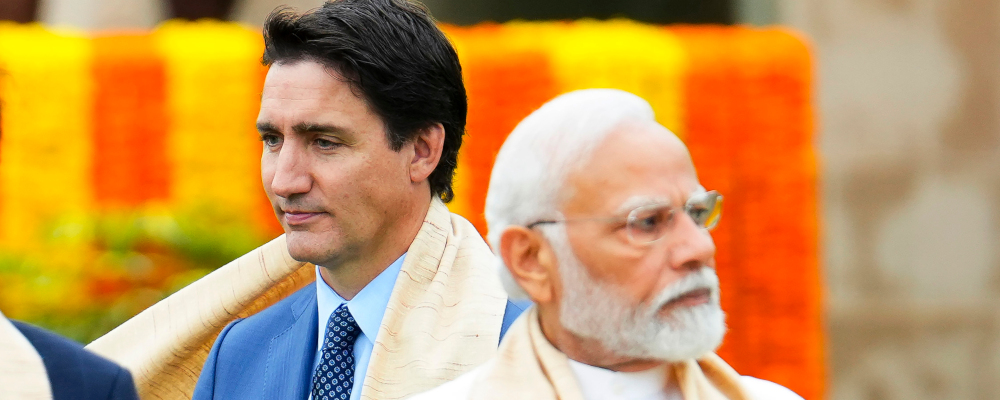Earlier this month, Sanjay Verma, India’s High Commissioner to Canada, told a Montreal conference that the Indian government views any rhetoric around Sikh separatism or the creation of Khalistan in India’s Punjab region as a “national security threat.”
Here in Canada, however, our government generally views such statements as protected speech unless they cross into criminal activity under domestic law.
How we reconcile these two differing interpretations will define Canada’s relationship with the country that now holds the largest population on Earth.
The issue came to the fore in the aftermath of the murder of Sikh separatist Hardeep Singh Nijjar in June 2023 in British Columbia. Nijjar who was born in the Punjab region but moved to Canada in 1997 and became a citizen in 2007 was an advocate for Sikh independence. The Indian government had labelled him a key figure in the Khalistan Tiger Force, a banned militia group in the country.

The Trudeau government took the extraordinary step in September 2023 of accusing the Indian government for being complicit in Nijjar’s killing. The accusation set off serious bilateral tensions which I wrote about in November last year.
This month has witnessed some new developments in the case. Four men accused of carrying out the killing have been arrested and charged by the RCMP, three of whom came to Canada on student visas. They appeared before a B.C. court this week. It has been noted that the men could be linked to the Bishnoi gang, a criminal enterprise from Punjab involved in drug smuggling and extortion, including with operations in Canada.
High Commissioner Verma’s provocative comments about Sikh extremism came after these arrests. They reflect a common criticism from the Indian government about Canada’s perceived laxity when it comes to these issues.
For instance, Indian External Affairs Minister Subrahmanyam Jaishankar has previously criticized the Canadian government for “welcoming criminals with organised crime links from Punjab into the country” including those who promote separatist extremism and violence.
Verma has also stated that “Indians will decide what will happen to India, not foreigners,” implying that outside opinions on India’s processes are not welcome. According to this perspective, foreigners even include Indians who have renounced their Indian citizenship to gain Canadian citizenship.
As of May 8, India reiterated that Canada has yet to provide specific evidence that Delhi was connected to the four arrested men.
If Canadian officials have been silent on the issue, it shouldn’t be interpreted as agreement with the Indian government. The Canadian government has generally been of the view that India’s definition of terrorism does not compute with the Canadian legal system. Similarly, Ottawa says that India has provided insufficient evidence to back up its allegations that some Canadian residents are engaged in Khalistani terrorism. One country’s terrorist is another country’s outspoken citizen it seems.
How, if at all, can we bridge this gap?
One possible source of common ground is that both Canada and India have faced separatist movements, including some instances of separatist-related violence in their contemporary histories. What role can these histories play in present-day thinking?

The Front de libération du Québec (FLQ)’s bombings and violence in Quebec in the late 1960s culminated in the famous October crisis in 1970 with the kidnappings of British Trade Commissioner James Cross and the eventual murder of Quebec Cabinet minister Pierre Laporte. The federal government eventually invoked the controversial War Measures Act to restore public order, including outlawing the FLQ, making group membership a criminal act.
What about India? It’s a country literally born from separation in August 1947 with Britain’s partitioning leading to a Hindu-majority India and the creation of the Muslim-majority Pakistan. In the immediate aftermath, there was a mass refugee crisis and violent outbreaks between opposing religious groups at the newly forged borders. By 1948, when the mass migration had settled down, 15 million people had been displaced and between one and two million people were killed. Punjab was an area heavily affected by partition.
The push from Sikh Khalistani separatists to form their own nation rose in the 1970s and hit a breaking point by the 1980s. In 1984, Prime Minister Indira Gandhi’s controversial use of military force to subdue the separatists in the Golden Temple (known as Operation Blue Star) led to high civilian casualties. She was later assassinated in October of that same year by her Sikh bodyguards. Operation Blue Star was a catalyst for a decade marked by violence between the Indian government and pro-Khalistani militants. Although this more violent push was put to rest by the 1990s, supportive sentiment remains, especially in diaspora communities beyond India’s borders.
This violent history of course doesn’t justify extra-territorial killings, but it still informs the perspective that India holds. With this understanding, there are multiple possibilities that may come to light in the coming months as Nijjar’s accused killers face trial.
If the investigations show links to gangs, then we should consider the threat levels of rogue elements on Canadian soil. This raises various concerns including about Canada’s student visa program. If it is instead revealed that the men are indeed linked to the Indian government, as it appears to be in the case in the United States, it reflects deeper challenges for the Canada-India relationship. It is also possible that the killing of Nijjar was a combination of these two narratives. Both are horrible outcomes for Canada. We do not want our country to become a playground for state-sanctioned assassins or foreign gang activity.
Of course the rule of law must be respected. But we should not ignore the fears that inform the perspectives of many Indians and Indo-Canadians. Recognizing these concerns will bring us one step closer to rebuilding the Canada-India relationship.
Recommended for You

‘We are not the United States. No one needs to own Canadian bonds’: Rudyard Griffiths and Sean Speer on Canada’s looming debt crisis

DeepDive: Bridging the imagination gap: Why Canadian businesses must rethink AI adoption now

‘Not a guide to practical action’: David Frum on 60 years of George Grant’s Lament for a Nation

Ginny Roth and Brian Dijkema: Why Ontario should allow independent schools and unlock true choice in education




